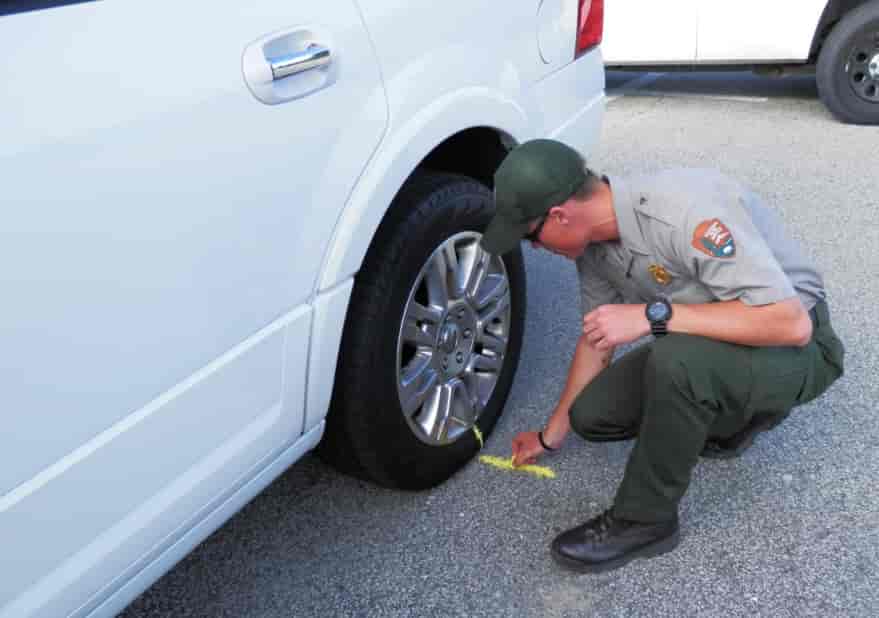Have you ever walked through a city and noticed those mysterious chalk marks on tires? They might seem harmless, but they serve a very specific purpose. While some people view this practice as an innocent way to manage parking, others see it as an annoyance or even a violation of their rights. So what does chalk on tires do exactly? Let’s dive into the world of tire chalking, exploring its uses, legality, and the controversies that surround it. Whether you’re a driver who’s been marked or just curious about urban rules, you’ll find everything you need to know right here!
Purpose of what does chalk on tires do
Chalking tires serves a specific purpose in urban settings. It helps parking enforcement officers determine how long a vehicle has been parked in a particular spot.
When an officer marks the tire with chalk, it creates a time reference. This allows them to monitor whether vehicles exceed allotted parking durations.
For drivers, this means that failing to observe posted time limits can lead to fines or citations. The chalk mark indicates not just the presence of a vehicle but also its duration at that location.
Additionally, using chalk helps maintain order on busy streets where space is limited. It ensures fair usage of parking spots for everyone in the area. Without such measures, some cars might monopolize spaces while others struggle to find available ones.
Thus, chalking is an important tool for managing public parking effectively and fairly across communities.
Legality of what does chalk on tires do
The legality of chalking tires varies by location. In many cities, it is a common practice used by parking enforcement to monitor time limits on vehicles. This method helps ensure that drivers do not overstay their allotted parking duration.
However, some jurisdictions have begun to scrutinize this practice more closely. Concerns about property damage and personal rights have led certain places to outlaw tire chalking altogether. As a result, local laws can differ significantly.
In areas where it’s still permitted, regulations often dictate how and when chalk can be applied. Knowing these guidelines is essential for both citizens and law enforcement officers alike.
Before using chalk on tires in your area, check municipal codes or consult with local authorities. Understanding the legal landscape surrounding tire chalking will help avoid potential fines or penalties later on.
Controversy surrounding Chalking Tires
Chalking tires has sparked considerable debate in many communities. Some view it as a necessary tool for parking enforcement, while others see it as an infringement on personal property.
Critics argue that chalking can be seen as outdated and ineffective. They point out that technology, like license plate readers, offers more accurate monitoring without marking vehicles. This perspective raises questions about the necessity of physical markers on cars.
Additionally, concerns have been raised regarding environmental impacts. The use of chalk may seem harmless, but some worry about residues left behind or potential damage to vehicle finishes over time.
Moreover, advocates for civil liberties often highlight issues surrounding policing practices. Chalking is sometimes viewed as part of a broader pattern of surveillance and control in public spaces.
This ongoing controversy reflects deeper societal tensions around regulation versus individual rights—a conversation that continues to evolve in urban settings across the country.
Alternatives to what does chalk on tires do
For those looking for alternatives to chalking tires, there are several options available.
One popular method is using tire sensors. These devices monitor parking duration electronically and can provide accurate data without the mess of chalk. They often integrate with mobile apps, making it easy to keep track of your parked vehicle.
Another option is digital permits. Many municipalities now offer virtual parking permits that allow you to manage time limits through a smartphone app. This eliminates the need for physical indicators on your tires altogether.
You might also consider curbside signs or visual markers placed nearby as reminders for both drivers and enforcement officers about time restrictions in specific areas.
Some cities have begun exploring automated cameras that capture license plate information, which can streamline monitoring without any physical markings at all.
Conclusion
Chalking tires serves a specific purpose, primarily for monitoring parking duration. It helps enforcement officers determine if vehicles are overstaying their welcome in regulated areas.
While this practice has its supporters, it also faces criticism regarding personal property rights and potential environmental impacts from the chalk itself.
With growing tensions around parking enforcement methods, alternative solutions like electronic sensors and mobile apps are gaining traction. These options aim to provide fair assessments without marking cars directly.
Understanding these nuances empowers drivers to navigate parking rules more effectively while considering broader implications of such practices on community dynamics.
FAQs
What is the purpose of chalk on tires?
Chalking tires helps parking enforcement officers track how long a vehicle has been parked in a specific spot. By marking the tire with chalk, they can determine if a car has overstayed its welcome.
Is it legal to chalk tires?
The legality of using chalk on tires varies by location. In some cities, it’s an accepted practice for monitoring parking time limits. However, other areas may have regulations against it, so checking local laws is essential.
Are there any controversies surrounding this practice?
Yes, many argue that tire chalking infringes on personal property rights and can be seen as outdated given modern technology. Critics often point out that ticketing should rely more on digital solutions rather than physical markings.
What are alternatives to using chalk on tires?
Alternatives include electronic systems like license plate recognition cameras or mobile apps that help manage parking without needing physical markers. These methods are often viewed as more efficient and less intrusive.
How does one remove tire chalk easily?
Tire chalk typically washes off easily with water or soap. A gentle scrub will usually do the trick without causing damage to your vehicle’s finish.
Can I legally remove tire marks from my vehicle?
While you may want to clean them off immediately, it’s generally advisable to leave them until you’re certain about any related fines or issues regarding your parked vehicle.

















